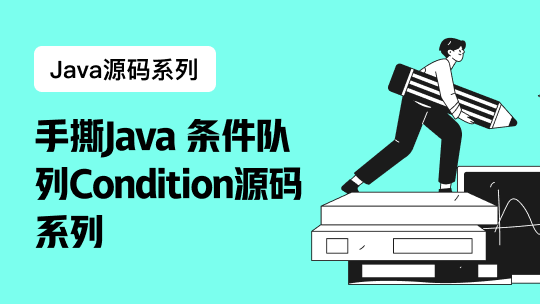java.io.writer类是一个抽象类
用于写入字符流
/*
* Copyright (c) 1996, 2011, Oracle and/or its affiliates. All rights reserved.
* ORACLE PROPRIETARY/CONFIDENTIAL. Use is subject to license terms.版权所有(c)1996,2011,Oracle和/或其附属公司。 版权所有。
ORACLE专有/机密 使用须遵守许可条款。
*
*affilliate
reserved
proprietary
confidential
use is subject to license terms
*
*
*
*
*
*
*
*
*
*
*
*
*
*
*
*
*
*
*/package java.io;
/**
* Abstract class for writing to character streams. The only methods that a
* subclass must implement are write(char[], int, int), flush(), and close().
* Most subclasses, however, will override some of the methods defined here in
* order to provide higher efficiency, additional functionality, or both.然而,大多数子类将覆盖这里定义的一些方法,以便提供更高的效率,附加的功能或两者。
abstract
implement
flush
provide
efficiency
additional functionality
*
* @see Writer
* @see BufferedWriter
* @see CharArrayWriter
* @see FilterWriter
* @see OutputStreamWriter
* @see FileWriter
* @see PipedWriter
* @see PrintWriter
* @see StringWriter
* @see Reader
*
* @author Mark Reinhold
* @since JDK1.1
*/public abstract class Writer implements Appendable, Closeable, Flushable {
/**
* Temporary buffer used to hold writes of strings and single characters
*/
private char[] writeBuffer;/**
* Size of writeBuffer, must be >= 1
*/
private static final int WRITE_BUFFER_SIZE = 1024;/**
* The object used to synchronize operations on this stream. For
* efficiency, a character-stream object may use an object other than
* itself to protect critical sections. A subclass should therefore use
* the object in this field rather than this or a synchronized
* method.
*/
protected Object lock;/**
* Creates a new character-stream writer whose critical sections will
* synchronize on the writer itself.
*/
protected Writer() {
this.lock = this;
}/**
* Creates a new character-stream writer whose critical sections will
* synchronize on the given object.
*
* @param lock
* Object to synchronize on
*/
protected Writer(Object lock) {
if (lock == null) {
throw new NullPointerException();
}
this.lock = lock;
}/**
* Writes a single character. The character to be written is contained in
* the 16 low-order bits of the given integer value; the 16 high-order bits
* are ignored.
*
*Subclasses that intend to support efficient single-character output
* should override this method.
*
* @param c
* int specifying a character to be written
*
* @throws IOException
* If an I/O error occurs
*/
public void write(int c) throws IOException {
synchronized (lock) {
if (writeBuffer == null){
writeBuffer = new char[WRITE_BUFFER_SIZE];
}
writeBuffer[0] = (char) c;
write(writeBuffer, 0, 1);
}
}/**
* Writes an array of characters.
*
* @param cbuf
* Array of characters to be written
*
* @throws IOException
* If an I/O error occurs
*/
public void write(char cbuf[]) throws IOException {
write(cbuf, 0, cbuf.length);
}/**
* Writes a portion of an array of characters.
*
* @param cbuf
* Array of characters
*
* @param off
* Offset from which to start writing characters
*
* @param len
* Number of characters to write
*
* @throws IOException
* If an I/O error occurs
*/
abstract public void write(char cbuf[], int off, int len) throws IOException;/**
* Writes a string.
*
* @param str
* String to be written
*
* @throws IOException
* If an I/O error occurs
*/
public void write(String str) throws IOException {
write(str, 0, str.length());
}/**
* Writes a portion of a string.
*
* @param str
* A String
*
* @param off
* Offset from which to start writing characters
*
* @param len
* Number of characters to write
*
* @throws IndexOutOfBoundsException
* If off is negative, or len is negative,
* or off+len is negative or greater than the length
* of the given string
*
* @throws IOException
* If an I/O error occurs
*/
public void write(String str, int off, int len) throws IOException {
synchronized (lock) {
char cbuf[];
if (len <= WRITE_BUFFER_SIZE) {
if (writeBuffer == null) {
writeBuffer = new char[WRITE_BUFFER_SIZE];
}
cbuf = writeBuffer;
} else { // Don't permanently allocate very large buffers.
cbuf = new char[len];
}
str.getChars(off, (off + len), cbuf, 0);
write(cbuf, 0, len);
}
}/**
* Appends the specified character sequence to this writer.
*
*An invocation of this method of the form out.append(csq)
* behaves in exactly the same way as the invocation
*
*
* out.write(csq.toString())
*
*Depending on the specification of toString for the
* character sequence csq, the entire sequence may not be
* appended. For instance, invoking the toString method of a
* character buffer will return a subsequence whose content depends upon
* the buffer's position and limit.
*
* @param csq
* The character sequence to append. If csq is
* null, then the four characters "null" are
* appended to this writer.
*
* @return This writer
*
* @throws IOException
* If an I/O error occurs
*
* @since 1.5
*/
public Writer append(CharSequence csq) throws IOException {
if (csq == null)
write("null");
else
write(csq.toString());
return this;
}/**
* Appends a subsequence of the specified character sequence to this writer.
* Appendable.
*
*An invocation of this method of the form out.append(csq, start,
* end) when csq is not null behaves in exactly the
* same way as the invocation
*
*
* out.write(csq.subSequence(start, end).toString())
*
* @param csq
* The character sequence from which a subsequence will be
* appended. If csq is null, then characters
* will be appended as if csq contained the four
* characters "null".
*
* @param start
* The index of the first character in the subsequence
*
* @param end
* The index of the character following the last character in the
* subsequence
*
* @return This writer
*
* @throws IndexOutOfBoundsException
* If start or end are negative, start
* is greater than end, or end is greater than
* csq.length()
*
* @throws IOException
* If an I/O error occurs
*
* @since 1.5
*/
public Writer append(CharSequence csq, int start, int end) throws IOException {
CharSequence cs = (csq == null ? "null" : csq);
write(cs.subSequence(start, end).toString());
return this;
}/**
* Appends the specified character to this writer.
*
*An invocation of this method of the form out.append(c)
* behaves in exactly the same way as the invocation
*
*
* out.write(c)
*
* @param c
* The 16-bit character to append
*
* @return This writer
*
* @throws IOException
* If an I/O error occurs
*
* @since 1.5
*/
public Writer append(char c) throws IOException {
write(c);
return this;
}/**
* Flushes the stream. If the stream has saved any characters from the
* various write() methods in a buffer, write them immediately to their
* intended destination. Then, if that destination is another character or
* byte stream, flush it. Thus one flush() invocation will flush all the
* buffers in a chain of Writers and OutputStreams.
*
*If the intended destination of this stream is an abstraction provided
* by the underlying operating system, for example a file, then flushing the
* stream guarantees only that bytes previously written to the stream are
* passed to the operating system for writing; it does not guarantee that
* they are actually written to a physical device such as a disk drive.
*
* @throws IOException
* If an I/O error occurs
*/
abstract public void flush() throws IOException;/**
* Closes the stream, flushing it first. Once the stream has been closed,
* further write() or flush() invocations will cause an IOException to be
* thrown. Closing a previously closed stream has no effect.
*
* @throws IOException
* If an I/O error occurs
*/
abstract public void close() throws IOException;}














